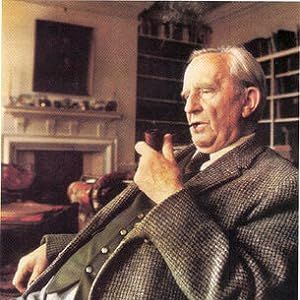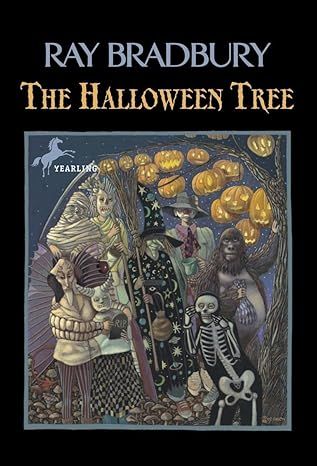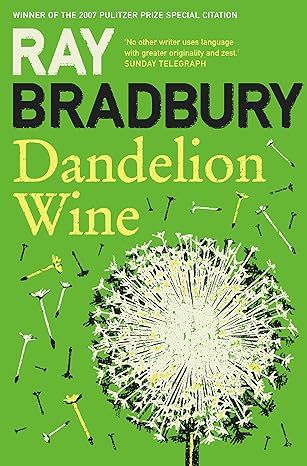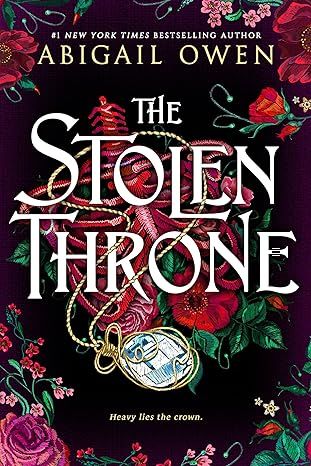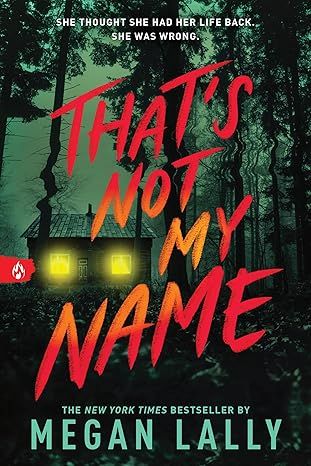The Lord Of The Rings
4.8
-
3,795 ratings
**"An extraordinary work—pure excitement." —New York Times Book Review **
One Ring to rule them all, One Ring to find them, One Ring to bring them all and in the darkness bind them
In ancient times the Rings of Power were crafted by the Elven-smiths, and Sauron, the Dark Lord, forged the One Ring, filling it with his own power so that he could rule all others. But the One Ring was taken from him, and though he sought it throughout Middle-earth, it remained lost to him. After many ages it fell by chance into the hands of the hobbit Bilbo Baggins.
From Sauron's fastness in the Dark Tower of Mordor, his power spread far and wide. Sauron gathered all the Great Rings, but always he searched for the One Ring that would complete his dominion.
When Bilbo reached his eleventy-first birthday he disappeared, bequeathing to his young cousin Frodo the Ruling Ring and a perilous quest: to journey across Middle-earth, deep into the shadow of the Dark Lord, and destroy the Ring by casting it into the Cracks of Doom.
The Lord of the Rings tells of the great quest undertaken by Frodo and the Fellowship of the Ring: Gandalf the Wizard; the hobbits Merry, Pippin, and Sam; Gimli the Dwarf; Legolas the Elf; Boromir of Gondor; and a tall, mysterious stranger called Strider.
Kindle
$21.99
Available instantly
Hardcover
$19.06
Paperback
$12.49
Audio, Cassette
$28.00
Ships from
Amazon.com
Payment
Secure transaction
ISBN-10
9780544003415
ISBN-13
978-0544003415
Print length
1216 pages
Language
English
Publisher
William Morrow Paperbacks
Publication date
August 13, 2012
Dimensions
5.5 x 1.75 x 8.25 inches
Item weight
2.7 pounds
Frequently bought together
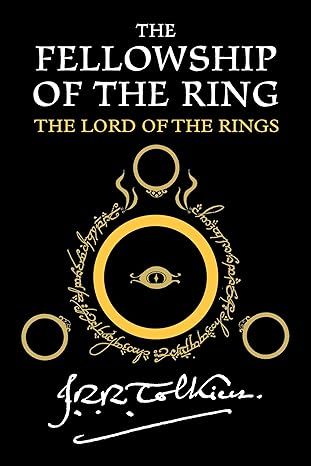
The Fellowship Of The Ring: Being the First Part of The Lord of the Rings (The Lord of the Rings, 1)
4.8
-
22,514
$12.08
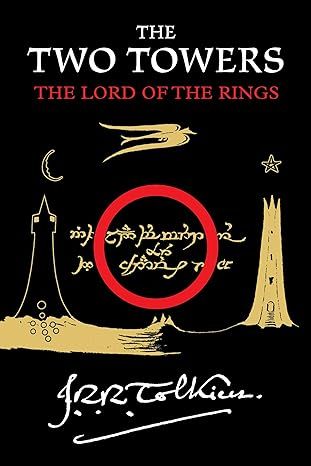
The Two Towers: Being the Second Part of The Lord of the Rings (The Lord of the Rings, 2)
4.8
-
13,625
$12.54
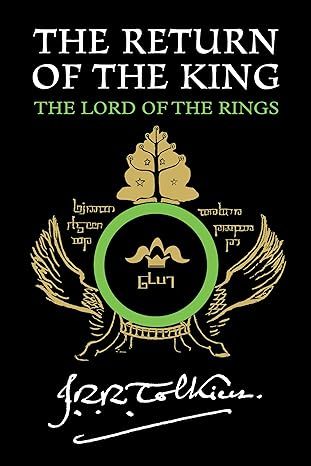
The Return of the King: Being the Third Part of the Lord of the Rings (The Lord of the Rings, 3)
4.9
-
10,910
$11.13

J.R.R. Tolkien 4-Book Boxed Set: The Hobbit and The Lord of the Rings
4.8
-
21,709
$20.77
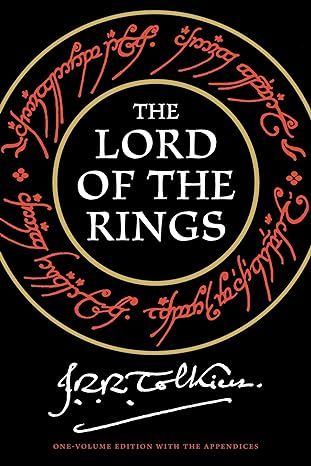
The Lord Of The Rings
4.8
-
3,795
$12.49
Popular highlights in this book
Many that live deserve death. And some that die deserve life. Can you give it to them? Then do not be too eager to deal out death in judgement. For even the very wise cannot see all ends.
Highlighted by 238 Kindle readers
One Ring to rule them all, One Ring to find them, One Ring to bring them all and in the darkness bind them.
Highlighted by 105 Kindle readers
Product details
ASIN :
0544003411
File size :
23524 KB
Text-to-speech :
Enabled
Screen reader :
Supported
Enhanced typesetting :
Enabled
X-Ray :
Enabled
Word wise :
Enabled
Editorial reviews
Trilogy of fantasy novels by J.R.R. Tolkien comprising The Fellowship of the Ring (1954), The Two Towers (1955), and The Return of the King (1956). The novels, set in the Third Age of Middle Earth, formed a sequel to Tolkien's THE HOBBIT and were succeeded by his posthumous The Silmarillion (1977). The trilogy is the saga of a group of sometimes reluctant heroes who set forth to save their world from consummate evil. Its many worlds and creatures draw their life from Tolkien's extensive knowledge of philology and folklore. At 33, the age of adulthood among hobbits, Frodo Baggins receives a magic Ring of Invisibility from his uncle Bilbo. A Christlike figure, Frodo learns that the ring has the power to control the entire world and, he discovers, to corrupt its owner. A fellowship of hobbits, elves, dwarfs, and men is formed to destroy the Ring by casting it into the volcanic fires of the Crack of Doom where it was forged. They are opposed on their harrowing mission by the evil Sauron and his Black Riders. -- The Merriam-Webster Encyclopedia of Literature
"Among the greatest works of imaginative fiction of the twentieth century." -- Sunday Telegraph
"A unique, wholly realized other world, evoked from deep in the well of Time, massively detailed, absorbingly entertaining, profound in meaning." -- Review
Sample
Chapter 1
A LONG-EXPECTED PARTY
When Mr. Bilbo Baggins of Bag End announced that he would shortly be celebrating his eleventy-first birthday with a party of special magnificence, there was much talk and excitement in Hobbiton.
Bilbo was very rich and very peculiar, and had been the wonder of the Shire for sixty years, ever since his remarkable disappearance and unexpected return. The riches he had brought back from his travels had now become a local legend, and it was popularly believed, whatever the old folk might say, that the Hill at Bag End was full of tunnels stuffed with treasure. And if that was not enough for fame, there was also his prolonged vigour to marvel at. Time wore on, but it seemed to have little effect on Mr. Baggins. At ninety he was much the same as at fifty. At ninety-nine they began to call him well-preserved; but unchanged would have been nearer the mark. There were some that shook their heads and thought this was too much of a good thing; it seemed unfair that anyone should possess (apparently) perpetual youth as well as (reputedly) inexhaustible wealth.
‘It will have to be paid for,’ they said. ‘It isn’t natural, and trouble will come of it!’
But so far trouble had not come; and as Mr. Baggins was generous with his money, most people were willing to forgive him his oddities and his good fortune. He remained on visiting terms with his relatives (except, of course, the Sackville-Bagginses), and he had many devoted admirers among the hobbits of poor and unimportant families. But he had no close friends, until some of his younger cousins began to grow up.
The eldest of these, and Bilbo’s favourite, was young Frodo Baggins. When Bilbo was ninety-nine he adopted Frodo as his heir, and brought him to live at Bag End; and the hopes of the Sackville-Bagginses were finally dashed. Bilbo and Frodo happened to have the same birthday, September 22nd. ‘You had better come and live here, Frodo my lad,’ said Bilbo one day; ‘and then we can celebrate our birthday-parties comfortably together.’ At that time Frodo was still in his tweens, as the hobbits called the irresponsible twenties between childhood and coming of age at thirty-three.
Twelve more years passed. Each year the Bagginses had given very lively combined birthday-parties at Bag End; but now it was understood that something quite exceptional was being planned for that autumn. Bilbo was going to be eleventy-one, 111, a rather curious number, and a very respectable age for a hobbit (the Old Took himself had only reached 130); and Frodo was going to be thirty-three, 33, an important number: the date of his ‘coming of age’. Tongues began to wag in Hobbiton and Bywater; and rumour of the coming event travelled all over the Shire. The history and character of Mr. Bilbo Baggins became once again the chief topic of conversation; and the older folk suddenly found their reminiscences in welcome demand.
Read more
About the authors
J. R. R. Tolkien
J.R.R. Tolkien was born on 3rd January 1892. After serving in the First World War, he became best known for The Hobbit and The Lord of the Rings, selling 150 million copies in more than 40 languages worldwide. Awarded the CBE and an honorary Doctorate of Letters from Oxford University, he died in 1973 at the age of 81.
Reviews
Customer reviews
4.8 out of 5
3,795 global ratings
deudad
5
A masterpiece that may never be topped
Reviewed in the United States on January 20, 2011
Verified Purchase
Lord of the Rings is one of the greatest literary contributions to mankind. I have yet to see a book, or set of books, written as well with the amount of depth that Tolkien has put into this work.
I'm first going to go through address each aspect of The Lord of the Rings, critiquing each of them as I go.
The story is can both be described as very complex, or very simple. On this alone, I would give the book five stars. The entire story is summed up in one sentence: How Frodo Baggins rid Middle-earth of the Ring of Power. Then again, there is far more depth to it than that. There are literally hundreds of subplots, both implied and obvious. There are subplots involving main characters like Aragorn and Gandalf, and others including stories that go only mentioned briefly, like that of the balrog, or Treebeard, dwarves, and elves. Stories are alluded to and told that only hint at the depth of the world, Middle-earth, that Tolkien has created. The plot proceeds following a few storylines, the ultimate goal being to destroy the Ring of Power in Mount Doom. Along the way we meet a myriad of other characters, from half-main characters, like Eomer, to ones that are only touched on, like a few orcs. The story here is just so big, that it can't even be contained in the pages that J.R.R. Tolkien has used to write it.
The interesting fact is that despite the complexity of the story, Tolkien presents it in such a way that all of the different aspects of the story flow together fluidly. So much so that it seems like the story is relatively simple. And that only continues to prove that Tolkien really knows how to write a good story.
That brings me to my second point. The characters. Because there are so many stories involved in this one big story, and so many characters involved, you'd think that there wouldn't be much time for characterization, but it's just the opposite. Tolkien takes the time to develop each and every character involved, and the hinted stories and subplots only go to enhance this. With all of the back stories, we get to know more about the characters, and what they do later on in the book causes them to stay true to who they are, based on what they've already done. Suffice to say, Tolkien is a master of characterization.
Moving onto Tolkien's writing style. It is absolutely flawless. His descriptions are masterful, and he doesn't fall into any of the usual faults that many authors fall into. Tolkien doesn't stop the action to use descriptions; he uses the action to channel the descriptions. His writing flows extremely well, and he moves the story steadily along while keeping consistent pacing, which is a very important aspect of any story. I really like how Tolkien allows the story to enhance his writing style. The grand landscapes, the epic battles. He captures the very essence of Middle-earth.
That's not to say he only writes on a grand scale. His writing is nearly perfect down to the simple scenes that involve interaction between characters. I especially like the relationship between Sam and Frodo. Tolkien goes from long passages of beautiful descriptions, to quick sentences of action. He is just as adept at writing lengthy scenes where little action occurs as he is at bringing dramatic battle scenes to life.
That brings me to how Tolkien handles dialogue. There are many passages where Tolkien uses long passages in dialogue to convey information while using only simple dialogue tags to portray the action. Some may say that the long passages are boring and detract from the story, but I say it only goes to enhance the story and create even better character development. Each character has his or her own voice, and each talk differently. This added with the action taking place in the short sentences between dialogue allows the scene to flow easily with the action never stopping while we still get to know whatever information needs to be conveyed.
Tolkien writes with a certain depth that I haven't seen in many other authors. Very few people can capture the essence of a story like he could. Tolkien had a gift, and he utilized it well. He wrote from his heart, and when authors write from their true feelings, it comes out more real than someone who, say, writes simply for money. The book as a whole is simply an almost flawless example of how books should be written. Not only does Lord of the Rings have just a good story and characters, Tolkien created numerous biblical parallels. This makes a work of fiction really come alive and feel much more relevant.
Lord of the Rings is the type of book that can be read numerous times. Whoever has not read Lord of the Rings should begin right now. It's worth the time put into it. I see no way for this to disappoint, if you are someone who knows a good story when you see one.
There's a reason this is a classic and has gained worldwide fame and approval.
Read more
12 people found this helpful
Bill
5
Only one disappointment
Reviewed in the United States on February 26, 2024
Verified Purchase
I don't have anything to add to the already numerous reviews for The Lord of the Rings. Suffice it to say, this is one of the greatest pieces of literature ever written with the most extensive world building and mythos you will encounter. The writing style is slightly archaic but is beautifully prosaic: it will take a few pages to get used to (like you might need for Jane Austen or Oscar Wilde or any other writer from 100+ years ago).
My one complaint to this beautiful copy of the book is that it does not contain illustrations. Look elsewhere if you want an illustrated copy, though my complaint with that is this book is prettier than the illustrated ones I've seen (barring the very expensive ones).
Read more
3 people found this helpful

W. White
5
21st Century Ahistorical Bibliophilia: Almost without peer, and the flaws have been been exaggerated in number and degree
Reviewed in the United States on August 12, 2007
Verified Purchase
Two points to clarify about the most popular single-volume LOTR editions:
-
The 1991 single-volume Alan Lee-illustrated edition is the "centenary" edition, commemorating Tolkien's 100th birthday (cf. "centenarian") . The "centennial" edition won't be published until 2054, which will be the 100th anniversary of the original publication of Lord of the Rings. This is a very well designed and well printed/bound edition, built to last and beatufil. Its only fault is the absence of fold-out maps (it has the black and white maps printed in sections, often seen in paperback editions).
-
The reason for the broken type in the 1974 red leatherette "Collector's Edition" (and the occurrences of this number on the order of 1 or 2 characters on every 50th page or so) is more likely that the source text from which the negatives/plates were made and this edition printed was itself flawed and originally was some form of letterpress metal type, probably Monotype [a more 'modern' version of the old LinoType system], though depending on the date of that setting [up to mid-'60s, or even later] it may have been hand-composed. All metal type gets re-used, and becomes worn and some of it cracked/chipped over time. There were many books reprinted in this way through the early '80s (and a few publishers, such as Lindsay Books, of long out-of-print, mostly public-domain or 'gray rights' titles, still do this).
The problem is unlikely to have been caused by faults in photo-typesetting strips or process-camera negs in 1973 or so (when this LOTR Collector's Edition was first printed) since that process was a fully mature, climax technology by then, and quality control was simply outstanding (this was due to that extinct beast, the unionized master-printer, especially at Houghton Mifflin, a publisher with a very large academic textbook list, and an industry reputation for quality production; just look at any ten trade hardbacks circa 1973 and earlier, and compare any element of quality to any ten current titles and it's clear the the technology and practice of printing and book binding peaked long ago, and nothing of newer technology, especially computer technology has served the interest of producing better made books, quite the opposite. 2007 tech only makes it faster and cheaper, nothing else.
Remember also that it was the Allen & Unwin type-compositors who introduced virtually all the spelling and diction errors in both the 1st and 2nd editions, some of which have only finally been fixed in the 2004-05 50th Anniversary edition; and these were errors mostly such as 'dwarves' being "corrected" to 'dwarfs', 'elven' to 'elfin', and many others, primarily linguistic, along those lines; these would have been proper corrections with any author other than Tolkien, of course.)
As for the notion that photo-reproduction is at all like printing a Word document on a laser printer, then scanning it back into a computer as a JPEG or GIF image file, and finally printing it again, that is a facile and plainly inaccurate comparison. In short, unless one starts with a bitmap or similar low quality computer 'font', prints on low-brightness (<70) recycled paper via a cheap ink-jet printer, scans using a 75-by-75 dpi setting via low-end scanning hardware and software, and repeats printing as above, the result will certainly be nothing so poor as Jeff Sun describes in his review. Photo-reproduction via PC and peripherals or via process-camera, strips, and offset printing, can easily and does commonly achieve excellent results, provided the equipment is of first quality and the operator is skilled.
If anyone is obsessed enough to try this (as I clearly am), one fairly reliable way to tell whether a book is printed (at some stage) from some form of metal type is to use at least a 20x loupe and examine the vertical straight edges (particularly of upper N's, T's, L's, and E's) for irregularity. Metal type degrades in miniscule degrees after the first few hundred impressions, and will show this by cracking/splitting/chipping/warbling/bending and otherwise appearing NOT straight, sharp, and crisp (especially machine-set monotype/linotype which was all lead/tin, since it was melted down repeatedly; hand-set type has antimony and sometimes manganese in it, which makes it much harder to start and also casts more sharply; parts of letters break off but usually don't deform). It's a challenge to tell these apart, since photo-reproduction of letterpress can be hard to distinguish from original letterpress printing, if the latter is done by a highly skilled compositor and press operator. Some letterpress books show the impression of the type on the page, like a light embossing, from the force of the type striking the stock. Really good printing avoids this. So, if you have a book without this feature that does show feathering, breaks, waviness, etc. it may be either letterpress or photo-repro of LP, but if these traits are present it is almost certain metal type was used at some point in the life of the typesetting.
Two caveats to even to this: feathering alone does not definitely mean deformed metal type. Feathering,, or little veins and stream-like projects away from the character is often caused by excessive inking and watery ink, and also by cheap papers that are unsized (meaning a starch like substance is added during the paper's manufacture to prevent feathering and bleedthrough; newsprint is unsized and you can see how feathering works buy lightly touching a fountain pen to a piece of it for a minute or so). The other caveat is that some computer fonts, especially some high end ones for MAC typesetting systems, have been photographically captured/reproduced from books printed mostly before 1800, and their designers often deliberately retain some of the source type's imperfections (which are due mostly to the more primitive metallurgy of that era) to achieve a particular design effect. You might be surprised how much theory and psychology underlies type-design and typography; there is a lot. Need a dissertation topic?
This has become, I see now, a rant, and a really long one. First as a reader, then as a writer, then as apprentice in a letterpress print shop and bindery, I've always held the book as art-object or craft-work in very nearly as high esteem as the words contained within. I do think these issues are worth some ink, and I expect (or hope) that those interested in fine editions such as this so-called "Collector's " (Ugh! I so hate that term, it's like "deluxe" or "premier" and is mildly patronizing to the reader/buyer) edition of LOTR might also find at least some of the above ramble of interest and use. I do regard this red leatherette slipcased edition (ISBN 0-39-519395-8) as my favorite. It was this edition in which I first read LOTR, and though the Centenary hardcover and the HC 50th Anniversary editions (slipcased US and UK, different designs, both excellent) are on the whole and in most particulars better printed and bound, this edition is a nostalgia item for me. I also very much like the red binding, evocative as it is of the "Red Book of Westmarch," the foil-stamping on the spine, of the White Tree of Gondor, (which must be by either Pauline Baynes or by Tolkien himself) is a delight, and the two color printing, in spite of the ocassional bad character and slightly inconsistent inking, makes me feel like I'm reading an incunabulum. All of these speak across from the old world, though perhaps very long after the Third Age had concluded. I recommend it, highly and without reservation, even to a casual collector, especially now since it has recently gone out of print(ca. 2003-2005, around the time the slipcased, black bonded-leather, US 50th Anniversary edition [ISBN 0-618-51765-0] was published), and is very unlikely to be reissued. It (the Red) listed for $75, and Amazon last sold new copies for $47.50 last January. Now however, fine, used copies are nearing the original list price for the new, and new copies are nearing $100, and very hard to find. Buy one now, as soon as you find one available fine or better.
Read more
72 people found this helpful
Top J. R. R. Tolkien titles
View all
The Return of the King: Being the Third Part of the Lord of the Rings (The Lord of the Rings, 3)
4.9
-
10,910
$11.13

The Two Towers: Being the Second Part of The Lord of the Rings (The Lord of the Rings, 2)
4.8
-
13,625
$12.54

The Fellowship Of The Ring: Being the First Part of The Lord of the Rings (The Lord of the Rings, 1)
4.8
-
22,514
$12.08

J.R.R. Tolkien 4-Book Boxed Set: The Hobbit and The Lord of the Rings
4.8
-
21,709
$20.77
Similar Books
Best sellers
View all
The Tuscan Child
4.2
-
100,022
$8.39
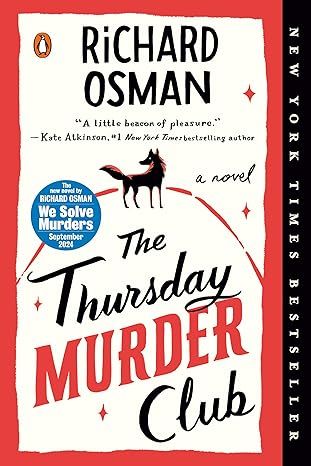
The Thursday Murder Club: A Novel (A Thursday Murder Club Mystery)
4.3
-
155,575
$6.33

Sapiens: A Brief History of Humankind
4.6
-
140,302
$13.49

The Butterfly Garden (The Collector, 1)
4.3
-
88,556
$9.59
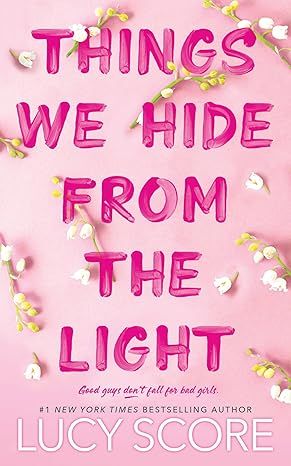
Things We Hide from the Light (Knockemout Series, 2)
4.4
-
94,890
$11.66
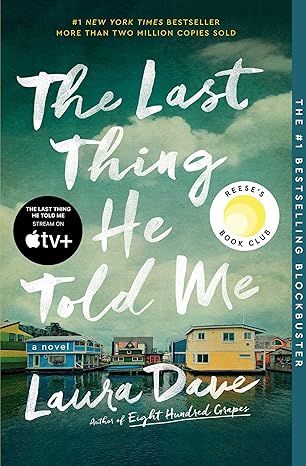
The Last Thing He Told Me: A Novel
4.3
-
154,085
$2.99
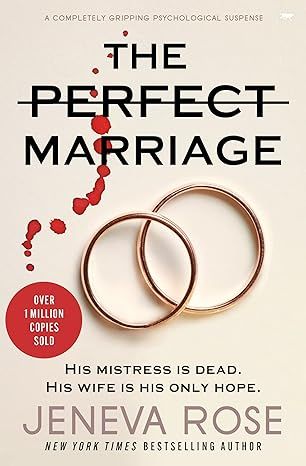
The Perfect Marriage: A Completely Gripping Psychological Suspense
4.3
-
143,196
$9.47

The Coworker
4.1
-
80,003
$13.48

First Lie Wins: A Novel (Random House Large Print)
4.3
-
54,062
$14.99
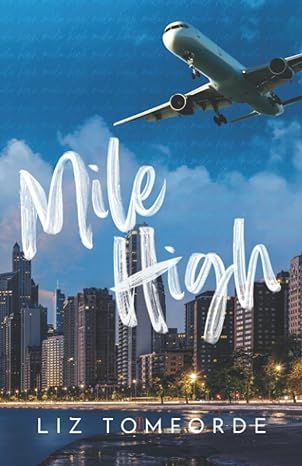
Mile High (Windy City Series Book 1)
4.4
-
59,745
$16.19

Layla
4.2
-
107,613
$8.99

The Locked Door
4.4
-
94,673
$8.53
